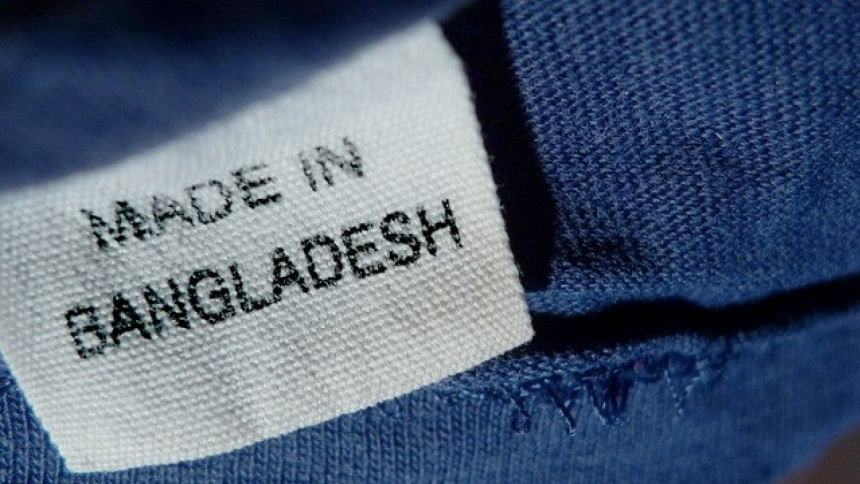Reversing the declining price of RMG exports

Bangladesh is running out of breath as it tries to reach the USD 50 billion garments export target for 2021 set by the industry in 2014. The slogan to reach "Fifty by Twenty One" has caught on, and the government has been corralled in to promote this cause. As late as December 2016, at a seminar organised by BGMEA entitled "Taking Bangladesh Apparel Sector Forward", the State Minister for Foreign Affairs Mr. Shahriar Alam echoed these sentiments. But things look a little less rosy now than they did three years ago. Last fiscal year, from July 2015 to June 2016, our garments exports totalled USD 28.09 billion whereas in the calendar year ending in December 2016, our exports were USD 28.67 billion. To reach the target of USD 50 billion in 2021, while we have a little over four more years to play, the export rate needs to grow at a 12.25 percent cumulative rate, according to the Sourcing Journal. Is that achievable? It certainly is not an impossible task! Past growth rates have been in the double digits, but given the current global economic and trade environment, whether it is possible for Bangladesh to continue notching up double-digit growth rates is moot.
We can export more garments in physical quantity, but if the price keeps falling, our revenue goes down! There is no question that we are exporting more pieces of shirts, pants, t-shirts, etc. each successive year, but our exports in dollar terms, after discounting for inflation, is not growing as fast as it could have.
And, an important part of this equation is the fact that price of garments is declining and not keeping up with costs. According to a report by ESCAP, the price growth of export goods of Bangladesh will decline in 2017 compared to the current year but the volume will increase significantly in the same period. While this report, Asia-Pacific Trade and Investment Report 2016, considered all exports, the prospect for RMG falls into the general mould of declining prices. At a recent conference at Harvard organised by ISDI, all stakeholders including representatives from the buyers and labour unions agreed that the price of clothing has been declining in recent years. And, the downward pressure on price, from the demand side, has been two-fold: consumers are now buying more high-end products and "apparel and footwear sellers are losing consumer dollars to healthcare, rent, home-related products, electronics and cars."Another reason for the lower price is that with greater prosperity, it is well-known that basic needs such as food and clothing have low income and price elasticity.
What can we do then to boost our prices? Even at the risk of being a spoiler, let me give you the answer to this question up front: There are many approaches, which include marketing, engineering, management, and economic tools, to raise the price of RMG and are well-known, the ultimate goal is not easy to accomplish.
Interestingly, the Commerce Minister Tofail Ahmed last month urged "labour bodies to press buyers to raise RMG prices". The Minister, at a training programme organised by BGMEA, exhorted the union leaders to connect with their counterparts in the importing countries to use their influence on buyers and consumers. He said "the labour organisations of the RMG sector should tell the buyers to raise product prices which would help increase labour wages in the sector." Whether this roundabout approach would work is questionable. In my district Sylhet, this circuitous way of doing things, even if effective, is sarcastically called tin khutai baingon para or plucking an eggplant with three poles.
More realistically, there are four economic ways to boost exports: quantity, price, changing product mix and exchange rate manipulation. While the other three, particularly diversification and exchange rate are important issues, I will save these topics for another discussion, and throw up a few ideas on price.
The key question is what are the factors that influence the market price of garments that we export? Notwithstanding the appeal by our Prime Minister to foreign buyers to increase the price they offer, one only has to note that while Bangladesh has a large share of the RMG export market, we are a price taker. Basic economics teaches us that for such products, the forces of supply and demand prevail in the global market, and an individual supplier like us cannot influence price by manipulating either market supply or demand curve. We operate in a very competitive market, and our competitors including Vietnam, Sri Lanka and the Philippines have increased facilities in the RMG sector leading to downward pressure on global prices. But we can boost our share of the high-end products, at the expense of China and Vietnam, with some planning and marketing. And that would be a very smart strategic move in the intermediate term.
The industry can also boost profitability, without increasing price, by increasing productivity and efficiency. Ironically, readymade garments exporters have recently demanded higher cash incentives and devaluation of taka against the US dollar. The association also demanded that the apparel factories should be exempted from the gas price hike that the government planned to implement from January 2017. While it is true that Bangladesh RMG sector is caught between a rock and a hard place, our salvation is not in government subsidies but in better infrastructure and less red-tape. A lower cost of borrowing will also help exporters improve profit margins. If exporters are at a disadvantage due to say high cost of funds, we should address it directly rather than through devaluation.
In the years to come, to retain our market share in the low-cost-and-high-efficient region, the path to profitability and export growth is increased efficiency, higher productivity, and quality management. The global apparel market is valued at 3 trillion dollar, and between 2007 and 2013 the market increased with an average annual growth of 5.1 percent. It has been predicted that 2017 will be a stable year for apparel retail. According to a report released by Moody's in mid-December, "the sector can expect sales growth of 6 percent to 8 percent, led primarily by direct-to-consumer channels and international growth." However, the same report anticipates "apparel and footwear sellers losing consumer dollars to healthcare, rent, home-related products, electronics and cars. In addition, traffic is expected to be weak throughout the year, with department stores and larger retailers such as Wal-Mart bearing the brunt of that decline." The CEO of one of our largest buyers, Art Peck of Gap, Old Navy and Banana Republic is encouraging the industry to be "more nimble and better able to react to trends and increase the quality of clothes at a time consumer see apparel as a commodity."
It is encouraging to note that BGMEA and Danish Fashion and Textile Industry Associations recently jointly launched the "Step Up Project" to improve productivity and better address social and environmental challenges in the country's RMG industry. A similar initiative is needed to enable us to move up the value chain by using business processes and resources to export higher-margin products. BGMEA would also do well to study trends in ecommerce, emergence of sources in Asia and Africa, and link up more directly with the declining number of retailers. We can, in addition, explore new markets in Latin America, Africa and the Commonwealth countries.
The writer is an economist and writes on public policy issues. His new book Economics and Policy in the Public Arena will be published this year.

 For all latest news, follow The Daily Star's Google News channel.
For all latest news, follow The Daily Star's Google News channel. 



Comments